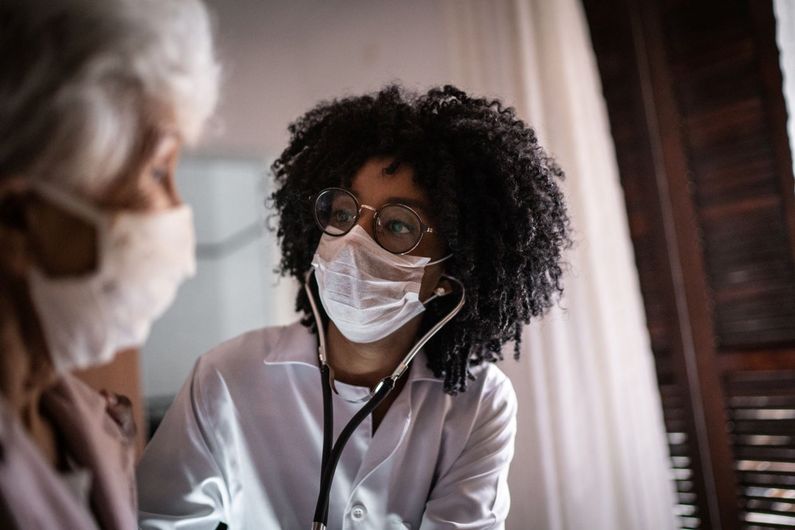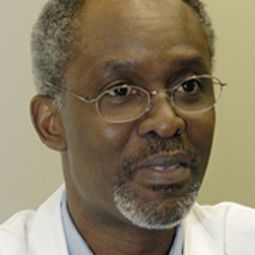Improving the representation of Black students in medical schools
- UdeMNouvelles
02/01/2021
- Martine Letarte
UdeM’s Faculty of Medicine is organizing a forum on Black student representation in health science programs.
As Black History Month begins, it is worth noting that Black students are still significantly underrepresented in medical faculties in Canada, as in other western countries. At Université de Montréal, for example, they make up only 3% of students admitted into medicine, compared with slightly more than 8% of the population aged 15 to 24 in the Montréal metropolitan area.
“Due to historical factors, many young people from Black communities think medicine is not for them,” says Édouard Kouassi, Associate Professor in the Faculty of Medicine at UdeM. “They think it is so hard to get into that they don’t have a chance. They are also discouraged by the fact that there are few Black professionals and students in health sciences.” In 1975, when Dr. Kouassi left Benin to study pharmacology at UdeM, there were only one or two Black students per graduating class.
The Quebec Black Medical Association, of which Dr. Kouassi is the president, the Socio-Economic Summit for the Development of Black Community Youth, and the UdeM Faculty of Medicine’s Social Responsibility Office are holding a Forum on Black Student Representation in Health Sciences. The Faculty of Nursing, School of Optometry, Faculty of Dentistry, Faculty of Pharmacy and School of Public Health are also partners in the Forum.
“The numbers don’t tell the whole story,” says Jean-Michel Leduc, Associate Professor of Clinical Medicine and chair of the Equity and Diversity Committee at the Office of the Associate Dean of Undergraduate Medicine. “We want to get a better understanding of the under-representation by listening to voices from Black communities. The goal is to set targets, find solutions and come up with an action plan for Fall 2021 together.”
Dr. Kouassi agrees: “It’s important to listen to Black communities and work with them to implement solutions.”
The Social Responsibility Office already has some experience in this area. Last year, it started working with representatives of Indigenous communities, which are also significantly under-represented, in order to identify the issues and find solutions.
A Western phenomenon
As Black under-representation in health science programs is not unique to Université de Montréal, McGill University has also been invited to partner in the Forum.
“The two major schools of medicine and health sciences in the Montréal area – one French, the other English – will therefore work together to broaden the scope of the effort for change,” says Édouard Kouassi.
“We want to break out of our silos to move forward,” adds Jean-Michel Leduc. “For example, the Black community is well represented in UdeM’s Faculty of Nursing. We can learn from their experience.”
Black under-representation in medicine and health sciences is a fact across the Western world. In Canada, the University of Toronto has been a leader on this front. It does outreach to Black communities to encourage young people to apply to the Faculty of Medicine. And its Black Student Application Program, an optional application stream, has increased the number of Black students admitted into medicine more than five-fold.
“Black students now make up about 10% of the student body, which reflects the size of Toronto’s Black population,” says Dr. Leduc. “The Black Student Application Program requires applicants to meet the same high standards but also asks them to write a letter of intent explaining why they decided to apply through the Program and conducts an interview with Black community members present.”
Initial efforts are paying off
UdeM has also been making efforts for several years to increase diversity in its health science programs. Three years ago, for example, the Faculty of Medicine’s Equity and Diversity Committee set aside places in medicine for students from economically disadvantaged backgrounds.
“Among other things, this initiative makes it possible to accept students who needed to work and weren’t able to devote themselves full-time to Cégep studies but have excellent academic results and fine personal qualities,” says Jean-Michel Leduc.
In 2018, UdeM’s Projet SEUR, an outreach effort that encourages high school students to pursue post-secondary studies, partnered with the Quebec Black Medical Association to set up a mentoring program.
“These efforts are recent and it is too early to measure outcomes, but things seem to be moving in the right direction,” says Dr. Leduc, who first became interested in the representativity of students admitted into medical school when he was a resident.
In 2020, Black students made up 3% of admissions into medicine at UdeM, compared with slightly under 2% in 2019. “It’s modest progress, but it’s a good start,” says Édouard Kouassi. “We have to clear away the barriers. For one thing, I think we need to include parents in the equation because they play an important role in their children’s career choices.”
A more representative student body in medicine and health sciences isn’t just a matter of social responsibility for UdeM; it’s a way to improve the quality of care: “People from Black communities or from disadvantaged backgrounds will often go back to their community to practice,” Dr. Leduc notes. “So we believe these efforts will improve access to care.”
“Studies have also shown that people are more satisfied with the care they receive when they have something in common with the medical practitioner,” Dr. Kouassi points out. “If there are very few health care professional from Black communities, that has a negative impact on the health of the Black population.”













